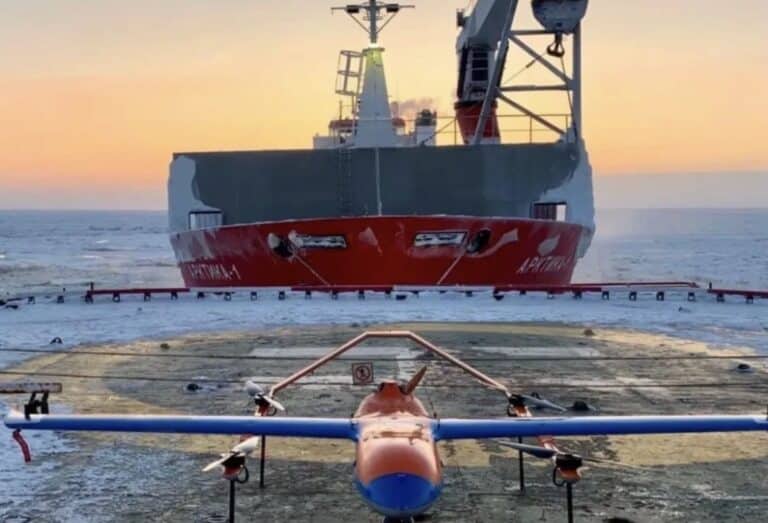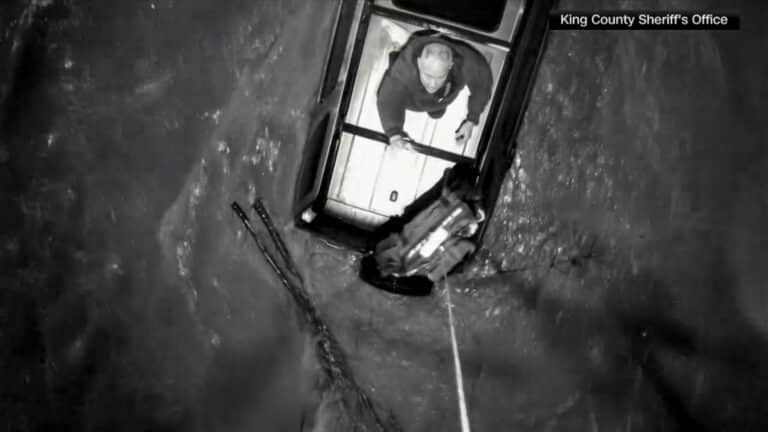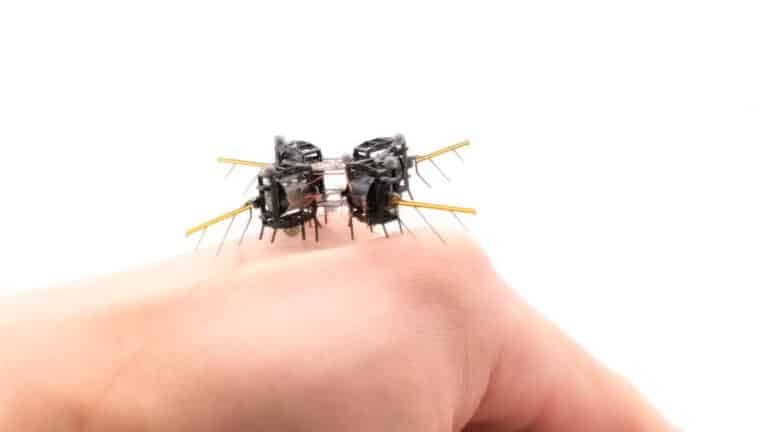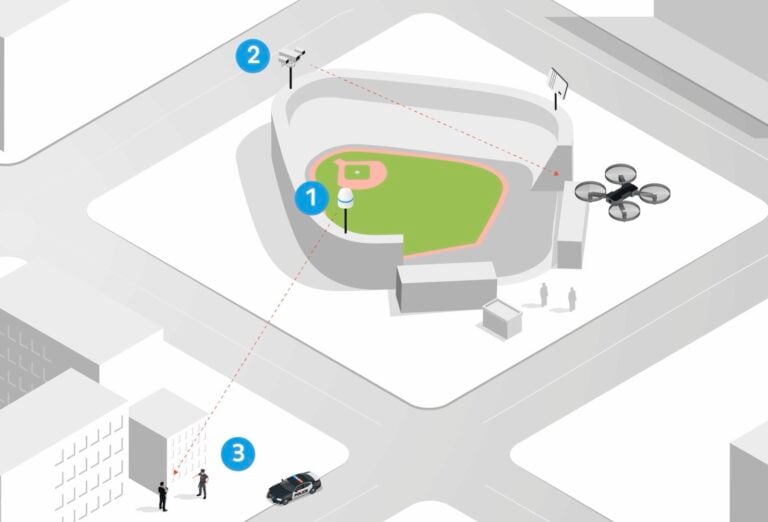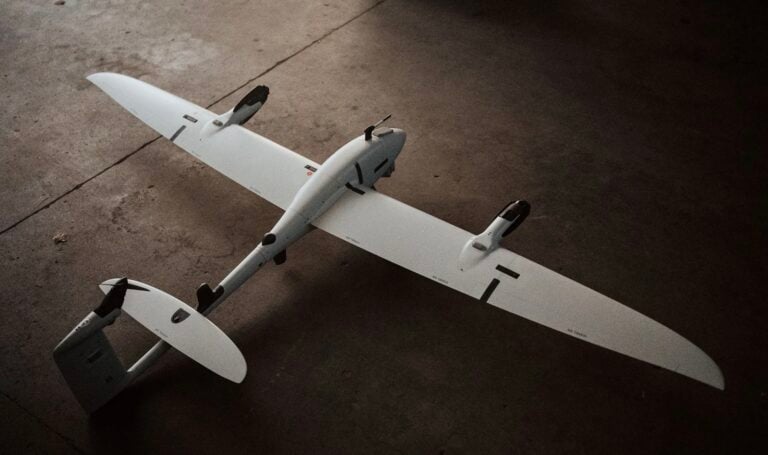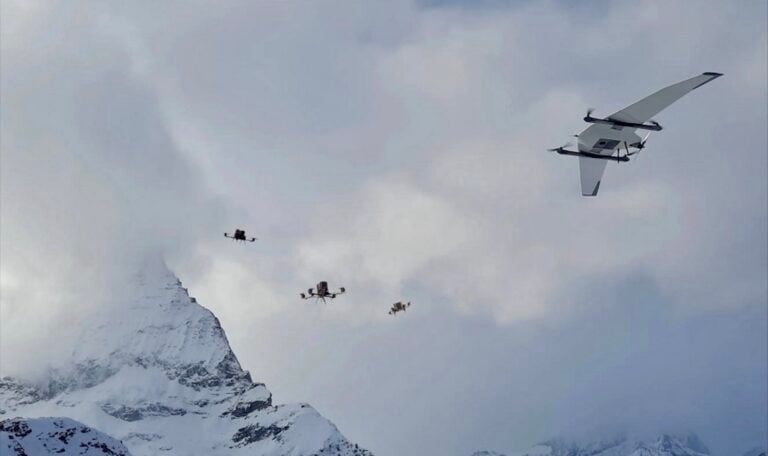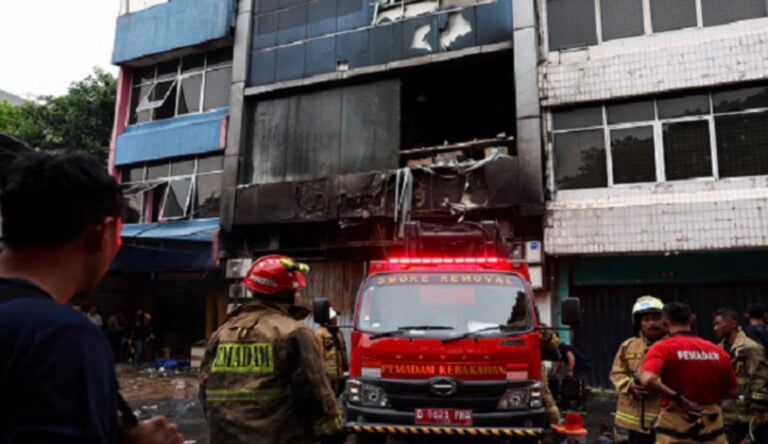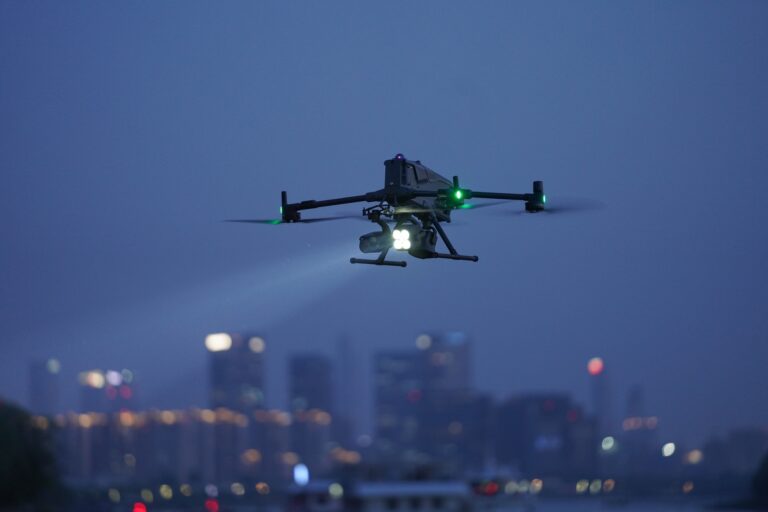DJI Neo 2 Wind Test: Can This Tiny Drone Handle 30 MPH Gusts?
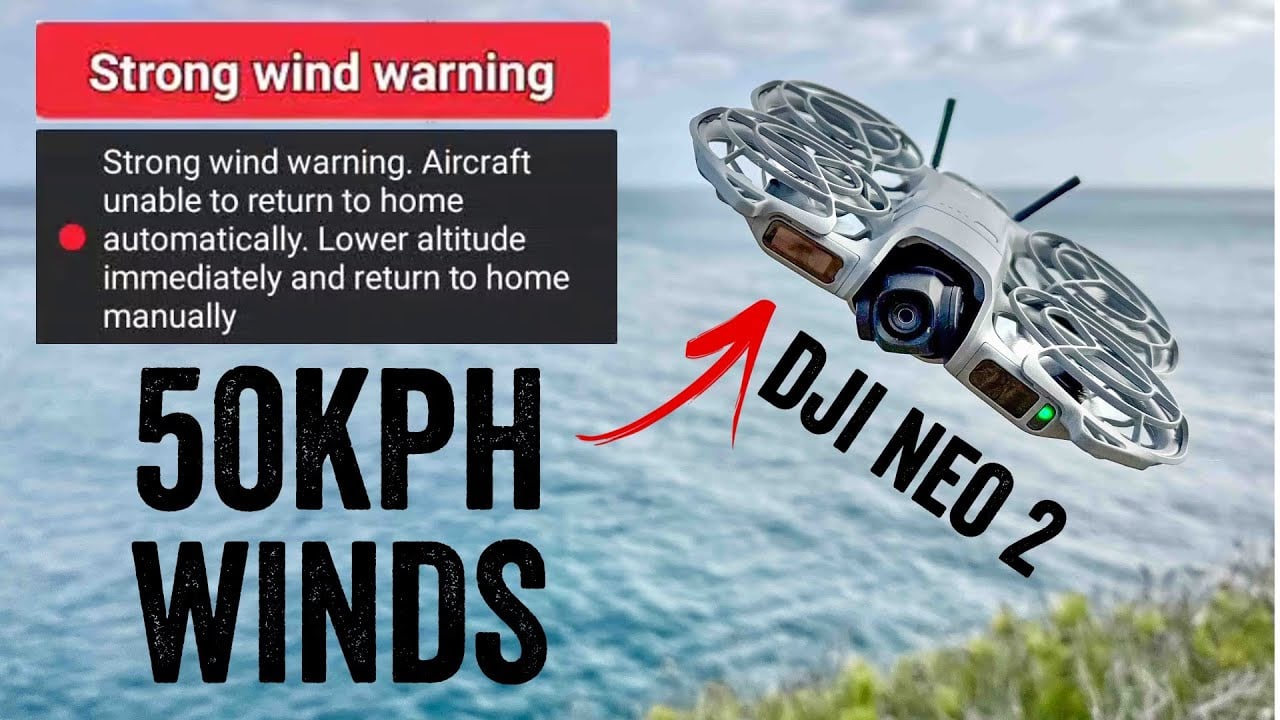
Amazon Drone Deals: DJI Mini 5 Pro Fly More Combo with DJI RC2 now for $1,099!
It’s time for a DJI Neo 2 wind test. In my latest video, the winds were gusting between 40 and 50 km/h (25-31 mph), and I wanted to show you how well this tiny drone works in those conditions, as well as a few things to be aware of when flying in high wind.
Takeoff Was a Scene
Props up, and that thing was struggling. That was way struggling.
Sport mode time.
I brought it forward and we were moving again. The Neo 2 was pointed straight into the wind, tilted at a steep angle just to hold position.
Here’s tip number one: when you have problems with the wind, definitely pop it into sport mode.
In theory, it should stay level no matter what mode it’s in. In practice, having done wind tests for years, a decade in much higher winds than this, I can tell you that sport mode is where you want to be.
I pointed it straight down and took my hands off the controls. It stayed put. The reason is it’s using GPS to figure itself out.
I wouldn’t normally recommend taking off into the wind in front of you, but it’s a video. What’s the worst that can happen?

Image Quality Looks Great
You can take the cage off the upper portion to increase wind resistance a little bit, but that takes the fun out of it.
From an image quality standpoint, it looks great.
The Neo 2 was really tilted fighting that wind, but the footage is stable. Again, I wasn’t touching it. It was staying put.
It’s crazy like that, but it’s staying put.
Near the ground, it uses a combination of the ground-based sensors to keep over the terrain as well as GPS. When I go up higher, it’s using GPS to do that.
Don’t Fly Toward the Sea
One thing to keep in mind when flying in windy conditions: don’t fly in a scenario where if the wind picks up, it goes out to sea.
That’s exactly how the wind was that day, and I almost never fly in those conditions when I’m on the edge. But I was trusting this thing fairly well.
I’ve had many, many wind tests, and I think we were right at the limit where we’re fine. Where things get spicy is if the winds were to gust above what I measured.
The Only Number You Care About
Here’s the thing to understand about drones and wind speed. That rating on DJI’s site? That’s like the wimpy wind speed.
In reality, the only number you care about is the top speed of the aircraft.
It doesn’t matter to the drone right now. It does not care whether it is wind or whether it is flying at that speed itself.
Look at the top speed of the aircraft to figure out whether you can fly in those conditions.
That doesn’t necessarily mean the gimbal is going to be perfect on a smaller drone like this that doesn’t have a full gimbal like you’d see on the Mavic 4 Pro or Mini 4 Pro. You might get more bumps when it has to do that tilt action.
But right now it was holding itself really well, and it looked generally pretty smooth.
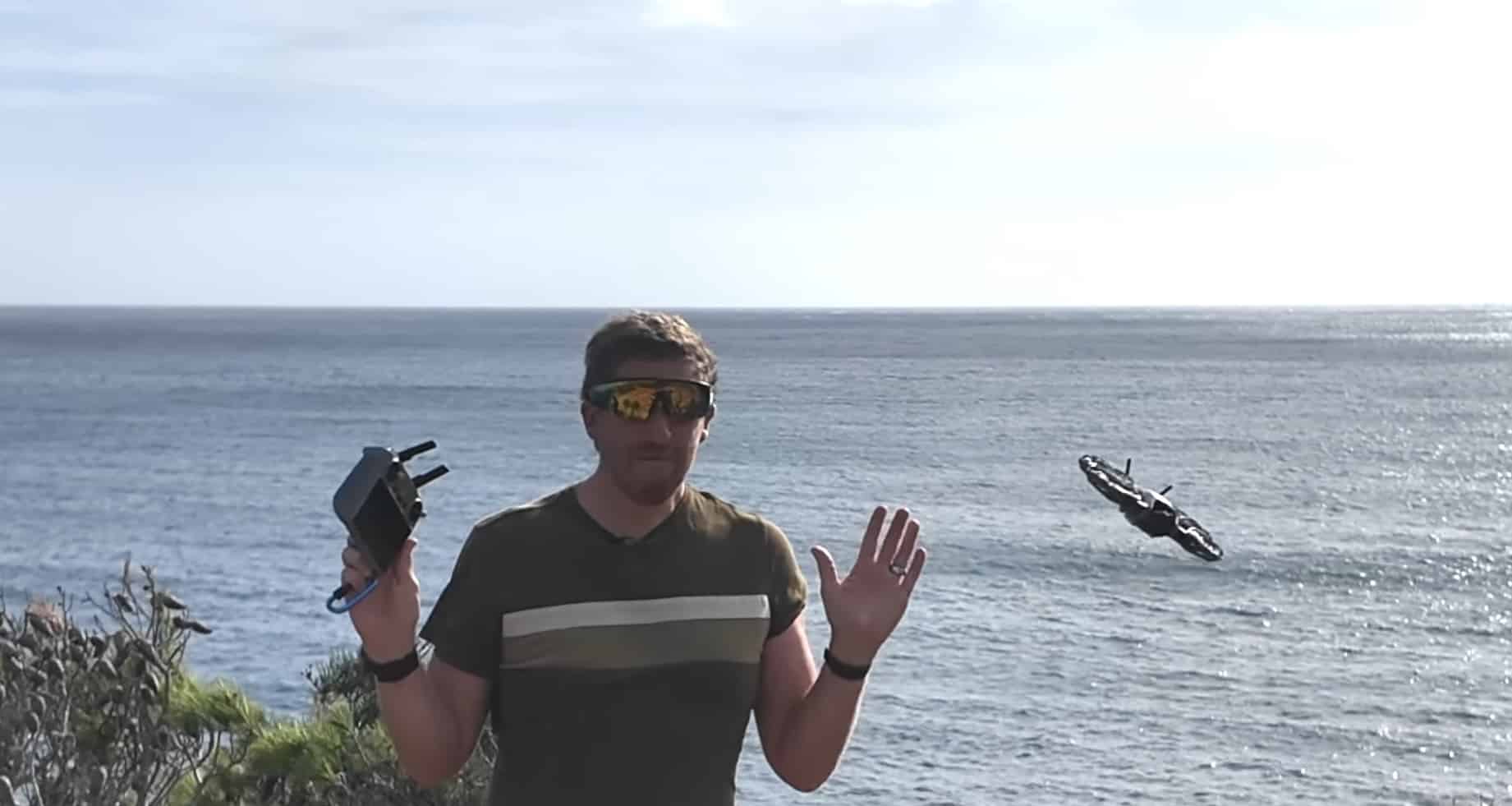
Battery Life Gets Crushed
I did take the Mavic 4 Pro out to the island there earlier and had no problem going out there and back.
But I wouldn’t take the Neo 2 out there. One of the things I’ve seen flying this in lots of windy conditions is that the battery life just throttles through.
We were at 45% after 7 minutes of filming. That’s not great.
We were looking at basically 14 or probably 13 minutes of battery at most. We would never make it back to that island. Keep that in mind.
Tips If You Get in a Pickle
Number one: bring it down low. That is the biggest tip I can give you.
When it comes to wind, the lower you get, the lower the wind speed. The higher up you go, the more gusts you’re going to get.
If you’re having a pickle getting back from that rock out there, bring it really close to the ground. Hide behind things.
I was hiding a little bit behind some rocks along the cliff, and you can see again, no problems. Flying along, it looked perfect.
You’d have no idea it was crazy windy right now.
But come back up over the trail, fully exposed and going straight into that headwind, watch that speed at the bottom. 14, 15, 16 km/h (9-10 mph). Quite a bit slower going into the headwind.
Turn back around and watch that speed skyrocket. In sport mode with that tailwind: 35, 40, about 42 km/h (26 mph).
Go back straight into the wind? About 25 km/h (15.5 mph). And of course, burning through this battery.
Landing in Wind
At this point, the drone wanted us to go back because it was concerned about our ability to return.
First, make sure you put it back in normal mode when you get close to the ground. Otherwise, you’ll forget that it’s in sport mode and obstacle avoidance won’t be on and it’ll crash into a bush or something stupid like that.
When it comes to landing in windy conditions, I virtually never let it land by itself.
The reason is simple. It’s bound to have a last second gust or something and blow all over the place.
It’s much easier to simply reach out, grab it, and flip it over. It’s as easy as that.
A lot of people say this will hurt the motors. It doesn’t.
I’ve had never-ending conversations with DJI about this. There’s absolutely nothing wrong with flipping your aircraft over to turn it off. That’s a long urban legend that’s been there forever.
This is the safest way to get an aircraft out of the air. Bring it down, take your hands off the controls, then reach out and grab it. If you try to reach out while you’re going down, it won’t work. It’ll fly back up again.
One More Thing About Forecasts
Keep in mind that the forecasted wind conditions are almost always on the ground, not in the air.
The air conditions will be higher than the forecasted wind conditions here on the ground. Definitely take that into account when deciding whether or not to fly.
For more drone and sports tech content, check out my YouTube channel and DCRainmaker.com.
What do you think? Share your thoughts in the comments below.
Discover more from DroneXL.co
Subscribe to get the latest posts sent to your email.
Check out our Classic Line of T-Shirts, Polos, Hoodies and more in our new store today!

MAKE YOUR VOICE HEARD
Proposed legislation threatens your ability to use drones for fun, work, and safety. The Drone Advocacy Alliance is fighting to ensure your voice is heard in these critical policy discussions.Join us and tell your elected officials to protect your right to fly.
Get your Part 107 Certificate
Pass the Part 107 test and take to the skies with the Pilot Institute. We have helped thousands of people become airplane and commercial drone pilots. Our courses are designed by industry experts to help you pass FAA tests and achieve your dreams.

Copyright © DroneXL.co 2025. All rights reserved. The content, images, and intellectual property on this website are protected by copyright law. Reproduction or distribution of any material without prior written permission from DroneXL.co is strictly prohibited. For permissions and inquiries, please contact us first. DroneXL.co is a proud partner of the Drone Advocacy Alliance. Be sure to check out DroneXL's sister site, EVXL.co, for all the latest news on electric vehicles.
FTC: DroneXL.co is an Amazon Associate and uses affiliate links that can generate income from qualifying purchases. We do not sell, share, rent out, or spam your email.






